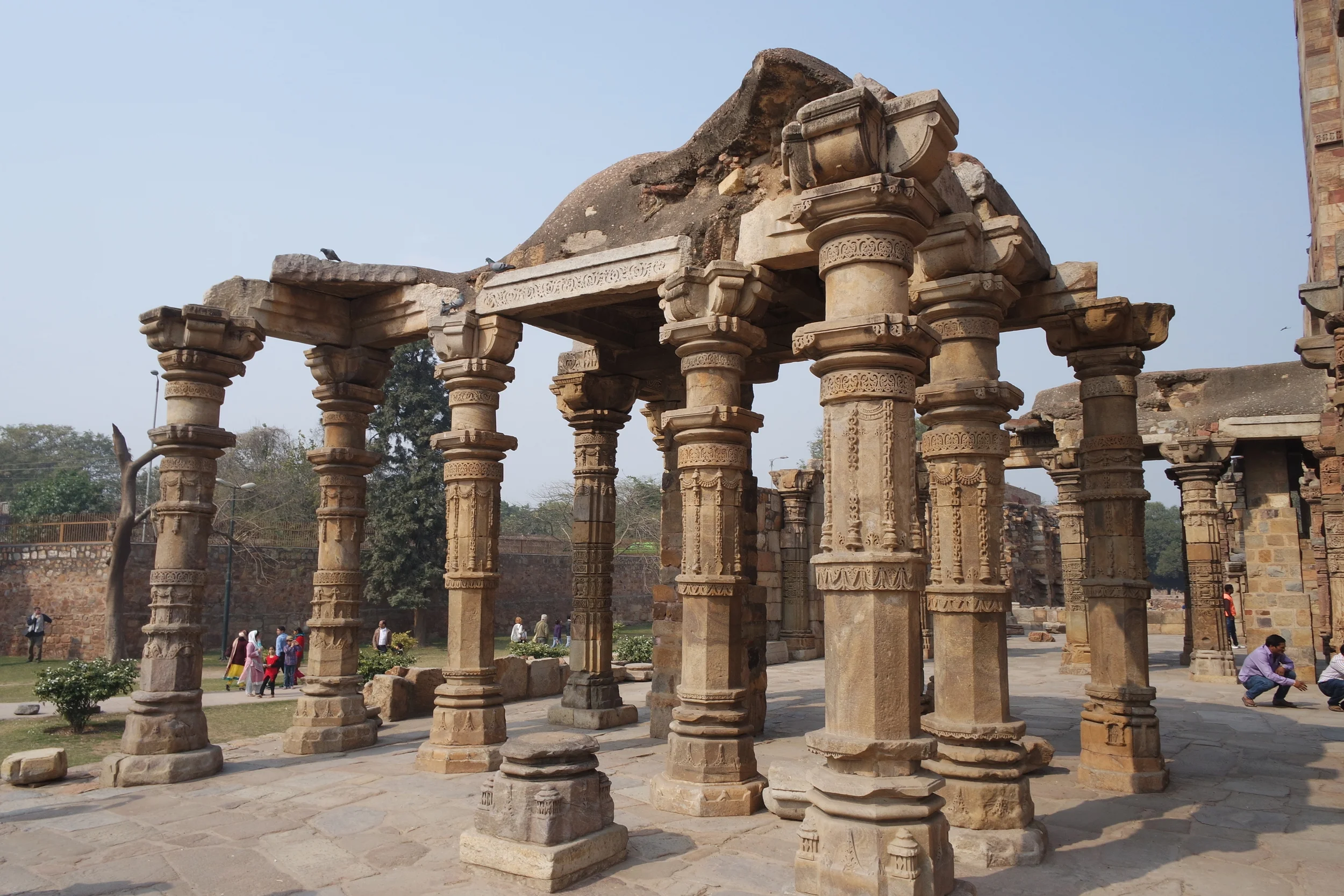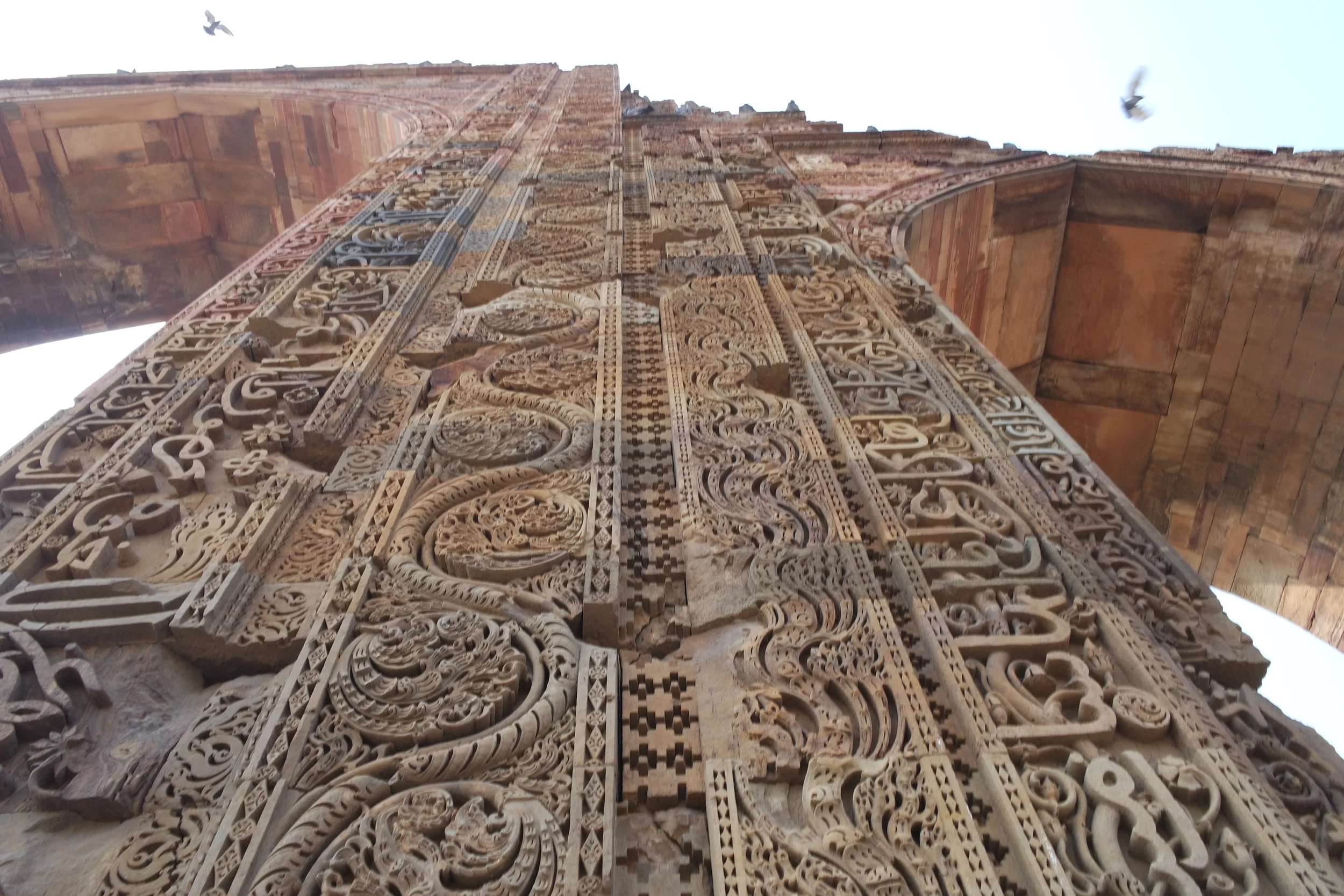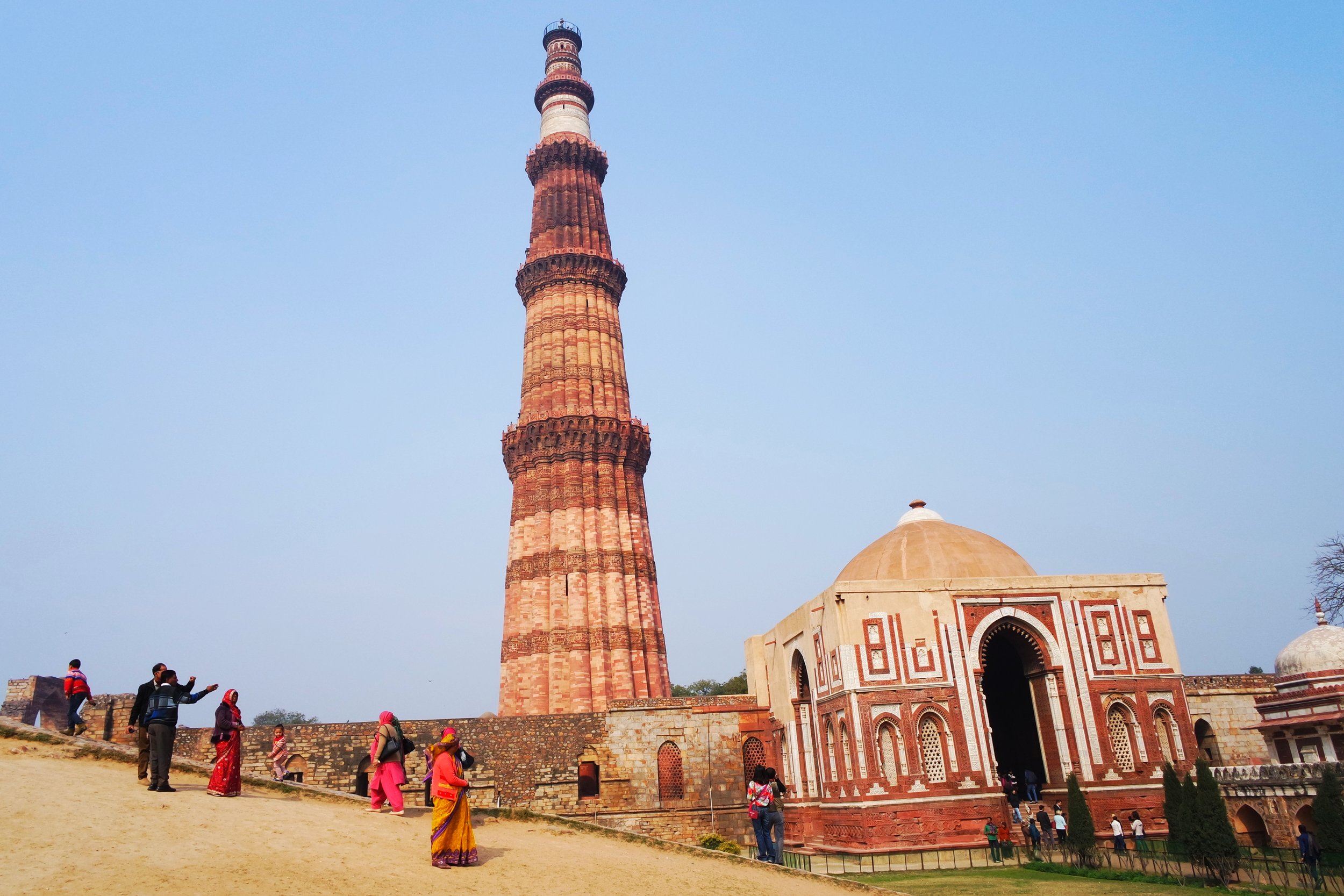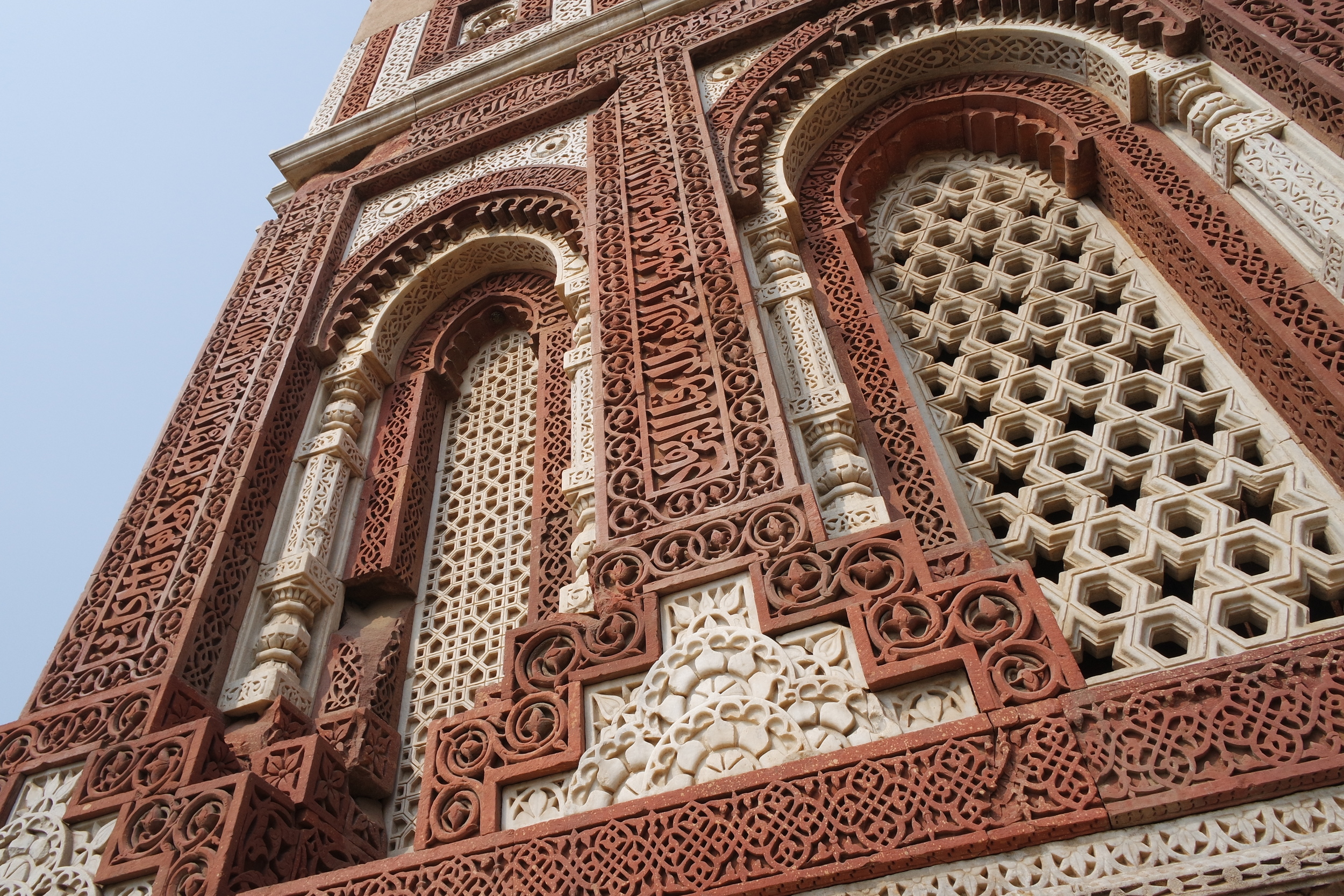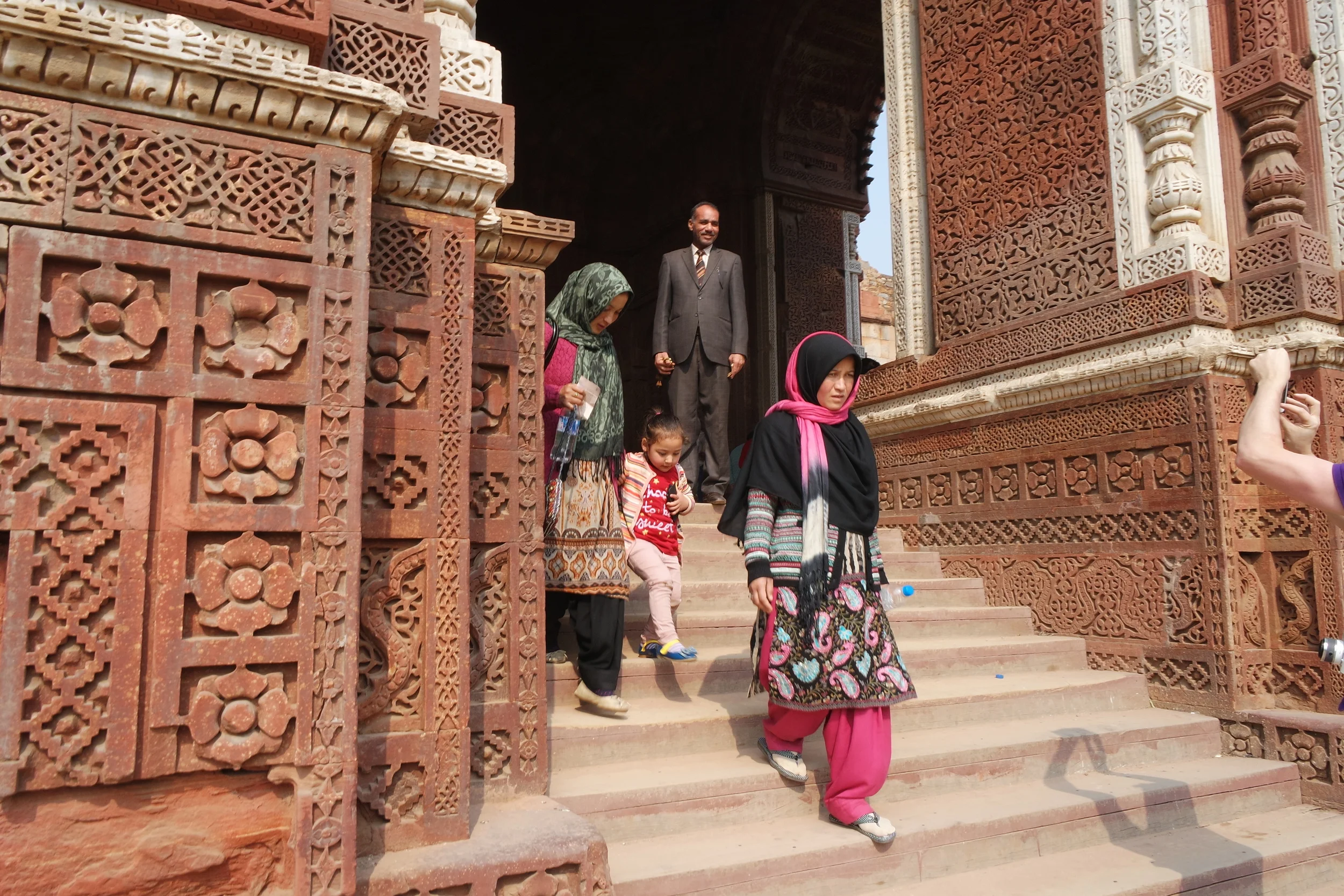The Quwwat-ul-Islam Mosque in the Qutb Minar complex features columns from pillaged Hindu and Jain temples.
A must-see attraction in Delhi, these towers and mosques feature aspects of Hindu, Jain and Islamic architecture.
We had a great time wandering the Qutb Minar complex one afternoon. Here we break down the various parts.
Alai Minar
We ate lunch on the low stone wall that faced the Alai Minar, an enormous grooved stump of lime mortar and rubble masonry that reminded me of smaller version of the Devils Tower National Monument.
“Anyone who can stand with his or her back to the pillar and link their hands behind it will be blessed with good fortune. ”
The unfinished monument, looming 80 feet above the landscape, was the Muslim ruler Ala-ud-din Khilj's failed grand attempt to build a tower twice the height of the Qutb Minar. Through an opening in the rubble, you can see the inner core, around which the staircase would have been built.
Quwwat-ul-Islam Mosque
We passed through a pillared colonnade built from the inventive reuse of pillaged temples that had previously existed on the site and entered the Indo-Islamic Quwwat-ul-Islam Mosque. An inscription on the eastern portal states that the structure was built with material from 27 demolished Hindu and Jain temples.
Elaborate pillars stolen from other religions' temples now decorate the Quwwat-ul-Islam Mosque.
Fragments of friezes depicting humans, animals and deities can be seen incorporated into the structure. Many of these motifs appear out of place, what with the Islamic tendency to find human depictions blasphemous, relying instead on geometric pattern. Perhaps these were used as a political statement of the people they conquered.
Standing within the courtyard of the mosque is a curious, virtually corrosion-free 35-foot iron pillar that dates back to the 4th century CE. It bears an inscription stating that it was erected as a flagstaff in honor of the Hindu god Vishnu.
Popular tradition holds that anyone who can stand with his or her back to the pillar and link their hands behind it will be blessed with good fortune. However, a fence erected in 1997 now keeps fortune-seekers away, likely put in place to prevent damage to the column from sweat — which contains a high amount of salt that acts as a corrosive agent.
Qutb-Minar
Next to the mosque is the Qutb-Minar in red and buff sandstone. We thought perhaps that we would not be able to get a decent picture of the tower due to the amount of haze. However, moving to the opposite side, the foggy gloom miraculously disappeared, and we were able to take some beautiful shots.
The Qutb Minar tower
Qutb-ud-din Aibak erected the tallest brick minaret in the world in 1193 after the defeat of Delhi's last Hindu kingdom. It was constructed to celebrate the victory of Mughal armies over the Hindu rulers. It has five distinct levels, each decorated differently, with a small balcony separating them.
Having recently read William Dalrymple's City Of Djinns, I could not find a more suitable description than his “like a fully extended telescope placed lens-down on a plateau in the Aravalli hills.”
Wally wanted to know why the tower was closed. I had read that there was some sort of stampede, where a bunch of people got trampled trying to exit en masse.
Alai Darwaza
Originally conceived as one of four grand gates to the mosque, the Alai Darwaza was the only structure to be completed. The domed gateway is decorated with red sandstone and contrasting white marble bands carved with calligraphic inscriptions.
The red sandstone and white marble façade of the Alai Darwaza Mosque in the Qutb Minar complex
Visitors leave the Alai Darwaza Mosque in the shadow of the Qutb Minar.
We entered the vaulted space, which is punctuated by intricately carved stone jali screens. Dust motes floated in the bright, pervasive sunlight as it passed through, casting star-shaped patterns onto the gate interior. It's an impressive sight.
If we had to choose between the Red Fort and Qutb Minar, we’d take this complex any day. –Duke

